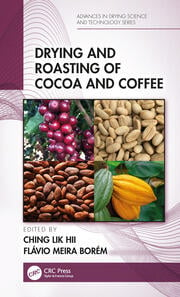ABSTRACT
Coffee flavor development begins on the farm during the growth and maturation of the fruit. Nitrogenous compounds account for about 15% of the green coffee chemical composition, with a slightly higher content in Coffea canephora compared to Coffea arabica. Carbohydrates are precursors for the Maillard and caramelization reactions, which are important for color and aroma development during roasting. The basic chemical composition of green or raw coffee seeds depends primarily on genetic aspects, especially those related to species. The poor, volatile fraction of raw coffee seeds gives them a weak but characteristic aroma enjoyed mostly by coffee lovers and experts. The main chemical reactions that produce a number of changes in the non-volatile and volatile compositions of coffee and that develop its typical color and flavor are the Maillard reactions and caramelization, and in the latter stages, pyrolysis. The chemical profile of raw seeds dramatically changes during roasting. An expertly programmed roast profile can fully explore the seeds’ flavor potential.


